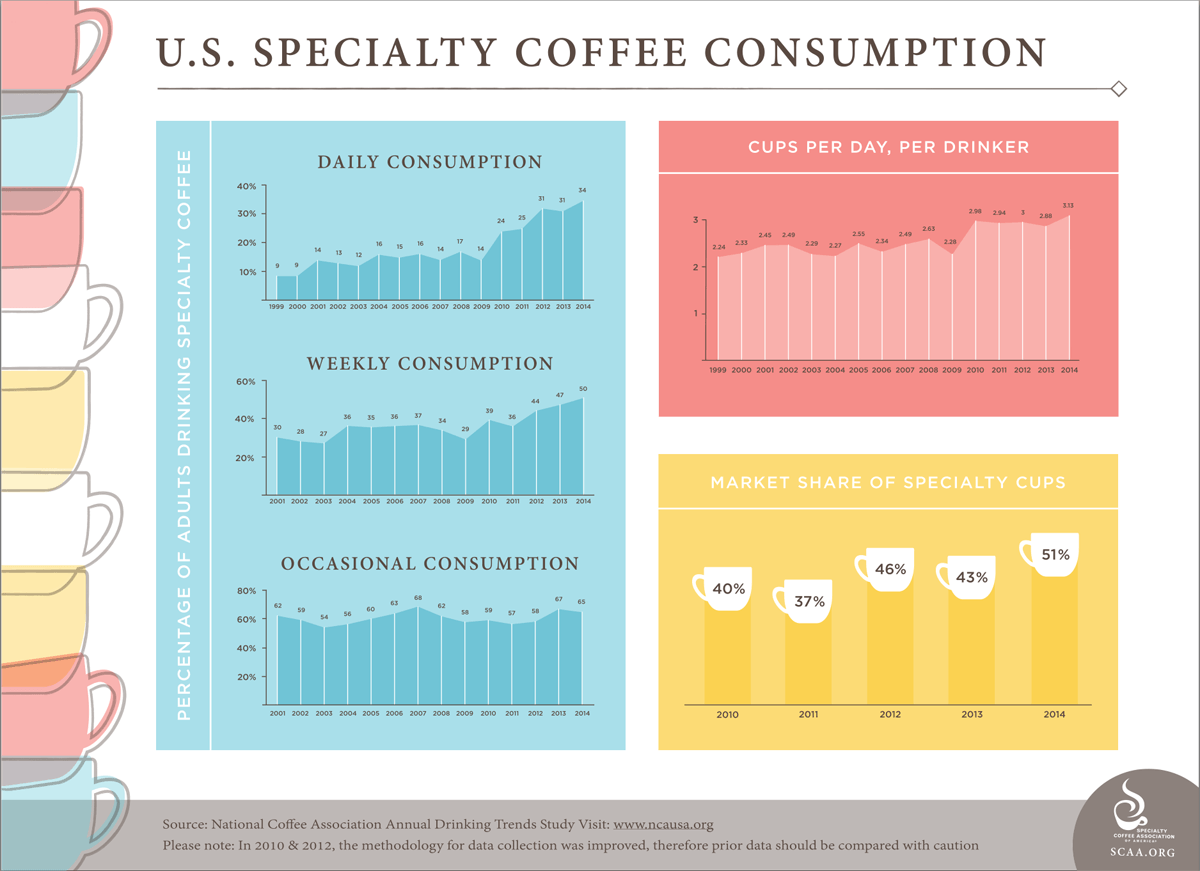Farm To Cup: The Story Of Your Daily Brew

Have you ever believed that coffee grounds were made in a factory somewhere? Most of us get that idea when we’re young, and it’s not really our fault. Big red cans of grounds made it seem like coffee was just another mass-produced food from a plant. In reality, coffee is actually a plant. Coffee beans are the seeds of small berries that grow on trees—that’s common knowledge these days. However, most coffee lovers still don’t understand just how amazing and complex the farm to cup story is. Once you’re told the story cover to cover, you’ll never be able to look at your daily brew the same way again.
Coffee Farming Is A Demanding Discipline
For quality-focused farmers, growing coffee doesn’t just happen. It takes dedicated effort, strategic planning, and a lot of patience. It all starts with a seed in the ground. Slowly it transforms into a small plant, sprouts thin branches, and grows a few leaves. The farmer transplants that tiny tree from the nursery to the field and carefully documents its growth. It’ll take at least two years before new trees produce coffee beans, and the farmer cares for them at every step of the journey to keep them healthy. He does this is by meticulously monitoring a handful of variables, like…- Soil acidity
- Soil nutrients
- Humidity
- Soil moisture
- Pests
The fertilizer recipe and watering schedules will need adjusting. Some of the plants will also probably need pruning from time to time. He’ll have to keep a close eye on leaves to make sure that if a pest or disease arrives, he can isolate it before it spreads too far. It’s long, precise work, but finally those trees produce bright red fruit (we call them “cherries”).
Harvesting Coffee Cherries Is Grueling
Some corporate farms use mechanical harvesters to strip trees of coffee cherries, but most stick to hand-picking. It doesn’t require a huge downpayment on big equipment, gives locals seasonal work, and tends to produce much higher-quality beans. All of our coffees at Driven Coffee are hand picked. Workers scour coffee farms all day long, selectively picking ripe cherries and leaving under-ripe ones behind for the next week. For some, this is the only work they have all year. The harvesters bring their daily hauls to a meeting point and are paid for the load. From there, more workers transport the cherries to a processing station where the coffee beans will be separated from the fruity outer layers.
Coffee Processing: An Underestimated Step
Every processing mill has its own way of getting the beans out of the cherries, but most techniques fall into one of three major categories. Natural Process — In this method, whole cherries are laid out on large patios or raised beds where they dry over the next 2-4 weeks. Once dry, the skin of the cherry can easily be removed from the bean by machinery. Because the fruity part of the cherry stays in-contact with the beans for so long, natural process coffees tend to have stronger fruity flavors, a big sweetness, and a heavy body. Washed Process — This process involves using a mechanical depulper to remove the fruity skin from the individual beans, then soaking them in large water tanks for 1-3 days. When this fermentation stage is complete, the beans are washed off and laid out to dry for 1-3 weeks. Because the fruit is removed early on, washed process coffees taste clean, refined, well-rounded, and tend to have a brighter acidity. Honey Process — In this category of newer methods, the skin and pulp of the cherry are removed mechanically, but quite a bit of the sticky, fruity mucilage is left on the beans (looks and feels like honey). These beans are then laid out to dry for 1-3 weeks, where the sugars from the mucilage caramelize on the bean. Because most but not all of the fruit is removed early on, honey process coffees often seem like a middle-ground between the other two main methods: a medium body, medium acidity, and an exceptional sweetness. Most specialty coffees are washed process beans, so when you get the chance to enjoy a honey or natural offering, don’t pass it up! At Driven Coffee, we try to always carry a variety of beans processed in each of the three methods. Once the beans are dry, they’re packaged, trucked to port cities, and shipped to roaster all over the world.
Roasters Unlock The Work Of The Farmers
Up until now, the beans have been grown, harvested, and processed to create and maximize flavors and aromas. Now it’s time to release them. Fundamentally, coffee roasting is about adding heat until the beans taste good. But practically, it’s a skill that involves creating a precise recipe of heat, airflow, and time to highlight the best flavors of each bean while avoiding negative ones. Roasters scientifically monitor these elements to ensure the right chemical reactions are happening at just the right time. And it’s not easy—over 800 flavor compounds are manipulated during this 9-16 minute process—and minor mistakes can mean big flavor changes. Once a roaster has identified a technique that works for a coffee (each offering requires a different roasting “recipe or profile”), they can use that in large batches that are sent to cafes, supermarkets, and homes.




